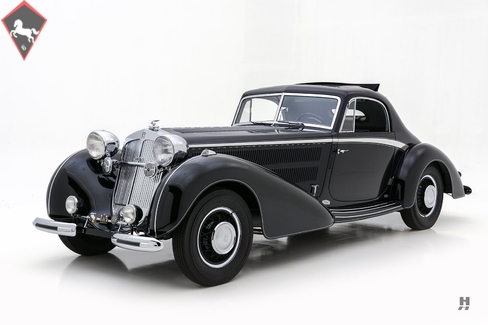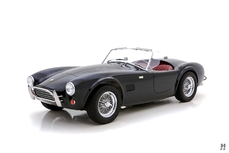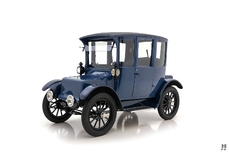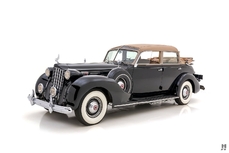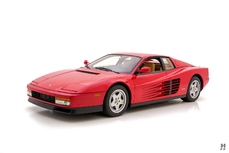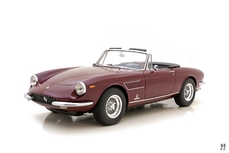Horch 851/853/853A/855/951/951A Coupe 1937
General description :
Once part of the mighty Auto Union combine, Horch is one of the German motoring industry's proudest pre-war marques. Founded in 1900 by August Horch, the firm steadily grew its reputation for engineering excellence and became a leading competitor to Daimler and Mercedes through the 1920s and 1930s, joining Audi, DKW, and Wanderer to form Auto Union in 1932. In the middle of the 1930s, the Auto Union Grand Prix team was locked in a fierce battle with Mercedes-Benz for supremacy on European racing tracks. The Germans saw motor racing as the ideal showcase for their engineering might, and threw seemingly endless resources behind their national teams, creating one of the greatest eras of technical advancement in the history of motorsport.
As the power and speed of the cars grew exponentially, drivers became national heroes. Auto Union's star was the great Bernd Rosemeyer, who famously man-handled the fearsome mid-engine Silver Arrows (with upwards of 550 horsepower!) to victory in numerous races across Germany and the rest of Europe. He won the German, Swiss, and Italian Grands Prix to take the European Championship in 1936, and claimed four of the five Auto Union victories against Mercedes-Benz's formidable new W125 in 1937. He became an international superstar after winning the Vanderbilt Cup in 1937 and is still counted as one of the greatest racing drivers of all time.
For their star driver, Auto Union commissioned a spectacular automobile as a reward for Rosemeyer's achievements. Based upon a special shortened, 130-inch chassis from the flagship Horch 853, the car wore a stunning one-off streamlined coupe body, designed by Johannes Beeskow and built by Erdmann & Rossi. The coachwork featured the curvaceous and graceful pontoon fenders of the Spezialroadsters, combined with a unique flowing fixed-head roofline and well-judged chrome accents. Rosemeyer nicknamed the car "Manuela," and he regularly as his transport to racing events and even the occasional Concours d'Elegance alongside his wife Elly Beinhorn; herself an accomplished pilot.
Sadly, Rosemeyer didn't get to enjoy Manuela for very long, as his life was tragically cut short in a record-breaking attempt on a stretch of the newly completed Autobahn. While attempting to beat a personal record of 268 mph, his Auto Union streamliner caught a crosswind, resulting in a spectacular crash. The 28-year-old Rosemeyer was thrown from the car and killed. The fate of Manuela is shrouded in mystery, as the Horch disappeared from public view shortly after Rosemeyer's death and was never seen again. Theories suggest it was either broken up by the factory or sacrificed to the impending war effort. Thankfully, photos and documentation of the original car provided enough information for the creation of a small number of faithful homages to the original, including one displayed in the Audi AG museum.
Proudly offered here is a stunning and faithful tribute to Bernd Rosemeyer's famous "Manuela" Horch 853, artfully constructed by Horch-Classic of Germany. The original Horch 853 donor chassis was discovered a barn in Belarus, minus its coachwork. Per the original specification, Horch-Classic shortened the frame to 130-inches before restoring it to full running order. For the coachwork, Horch-Classic used images of the original car to create a wood body frame. Then Horch-Classic skinned the wood frame in steel panels. The attention to detail is impressive, including the louvered bonnet, swiveling side windows, and a rare Gülde fabric sunroof – acquired after an exhaustive search. The car was then finished in black and accented with pale coach stripes and a dramatic polished sweep. Other fittings include genuine Horch headlamp lenses, Bosch driving lamps, twin chrome Bosch horns, and semaphore turning indicators built into the body. The resulting car has a tremendous presence and is faithful to the original while seamlessly incorporating personal touches by the builders.
With the coachwork underway, the chassis was fully restored, including the independent front end and De Dion rear axle. The engine completely rebuilt with new pistons, bearings, and overhauled cam and valvetrain. The rotating assembly and flywheel were balanced to ensure refined, silky-smooth high-speed operation. The engine was then fully detailed with faithfully reproduced hardware, plumbing, and woven-fabric wiring loom. This car features the highly-desirable five-speed gearbox for superb high-speed touring performance.
Black leather upholstery with contrasting piping provides a lovely complement to the paintwork. The upholstered instrument panel gives this Horch a businesslike, sporting appeal. As with the coachwork, the soft trim is beautiful, finished to a high standard and presented in taut, fresh condition. Authentic fittings, instruments, and hardware complete the package, and a set of period-correct fitted luggage behind the seats provide a charming flourish to the cabin.
Rosemeyer's "Manuela" may be lost to history, yet this superb recreation honors the spirit and style of the original, with impressive levels of craftsmanship. Superbly crafted and used sparingly since the restoration, this highly desirable German classic is prime for enjoyment in touring and road events worldwide.
Offers welcome and trades considered
https://hymanltd.com/vehicles/6558
1937 Horch 851/853/853A/855/951/951A Coupe is listed sold on ClassicDigest in St. Louis by Mark Hyman for $575000.
Car Facts
Car type : Car Make : Horch Model : 851/853/853A/855/951/951A Model Version : Coupe Engine size : 0.0 Model Year : 1937 Sub type : Coupé Location : Missouri
Sold
Seller Information
Sold
Other cars listed for sale by this dealer
About Horch
Horch, the German luxury automobile manufacturer, often stood in the shadow of its more renowned rivals, such as Mercedes-Benz and BMW. Yet, it had a unique and noteworthy story to tell in the world of luxury cars.Founding of Horch:
Horch was founded in 1904 by a visionary engineer named August Horch. The company was based in Zwickau, Germany, and it quickly gained a reputation for producing high-quality, finely crafted automobiles.
Rivalry with Mercedes-Benz:
One of the biggest challenges Horch faced was the fierce competition with Mercedes-Benz, the giant of German luxury automakers. Mercedes-Benz was a household name, and its cars were synonymous with luxury and performance. This rivalry often placed Horch in the shadows.
Engineering Excellence:
Horch, however, was no slouch in the engineering department. The company was responsible for several innovations, including the introduction of a straight-eight engine. These engineering feats helped Horch gain recognition for its performance and reliability.
Merging into Auto Union:
In 1932, Horch, along with Audi, DKW, and Wanderer, merged to form Auto Union. The four interlocking rings in Audi's logo symbolized this union. Under the Auto Union umbrella, Horch continued to produce luxury vehicles, contributing to the overall success of the group.
Challenges and World War II:
World War II brought significant disruptions to Horch's production. The post-war era also presented economic challenges as the company sought to regain its pre-war glory.
End of the Road:
In 1958, Auto Union was acquired by Daimler-Benz, the parent company of Mercedes-Benz. This marked the end of the Horch brand. Its legacy was incorporated into the larger Auto Union family.
Horch may not have reached the same level of international fame as Mercedes-Benz, but it played a significant role in the history of German luxury cars. Its dedication to engineering excellence and luxury contributed to the overall reputation of German automobile manufacturing. While it may have lingered in the shadow of its competitors, Horch's legacy endures as a testament to the golden era of automotive craftsmanship in Germany. It's a reminder that the history of automobiles is not just about the biggest names but also the unsung heroes that made their own indelible mark.
